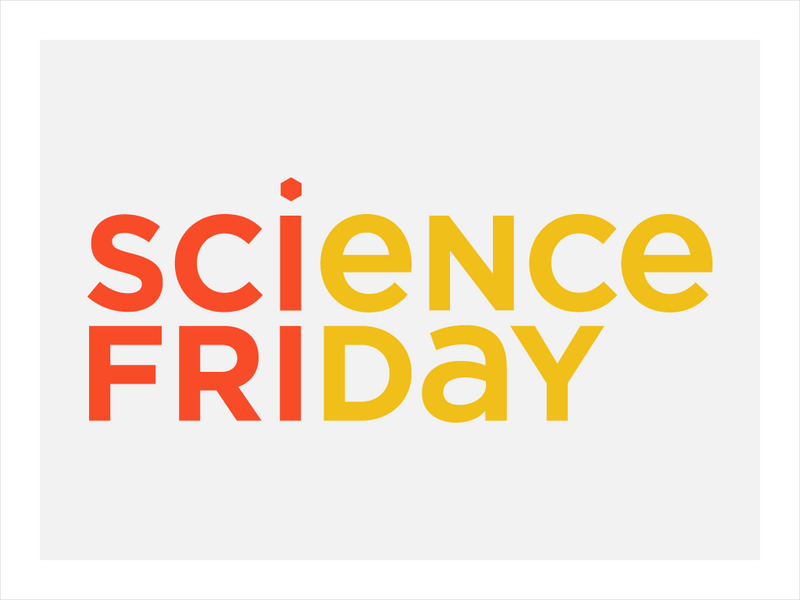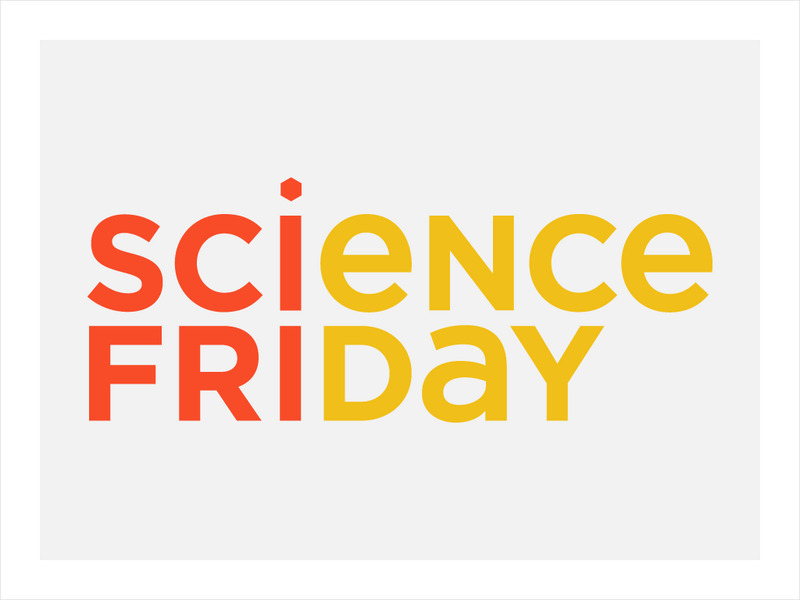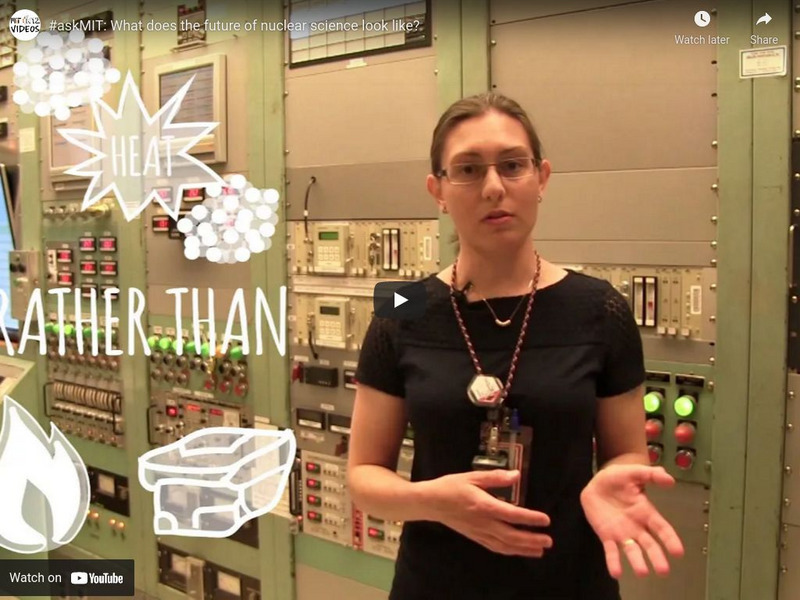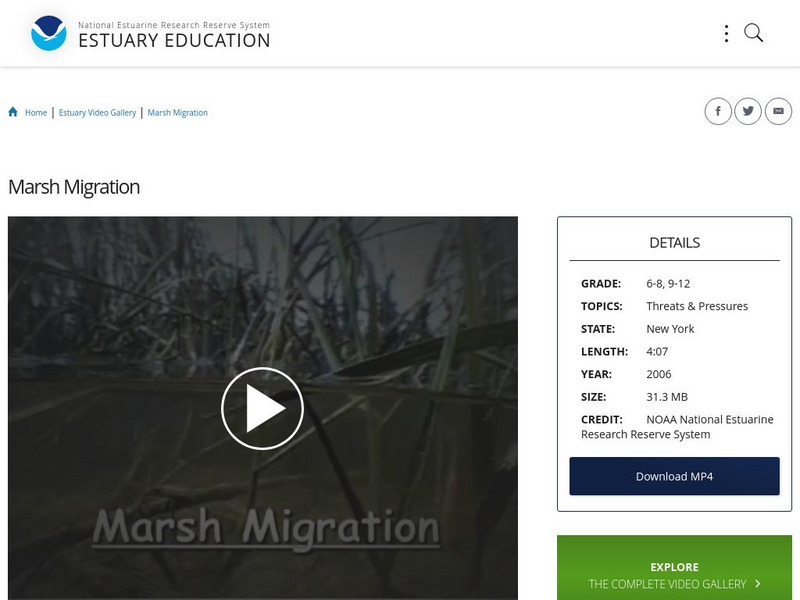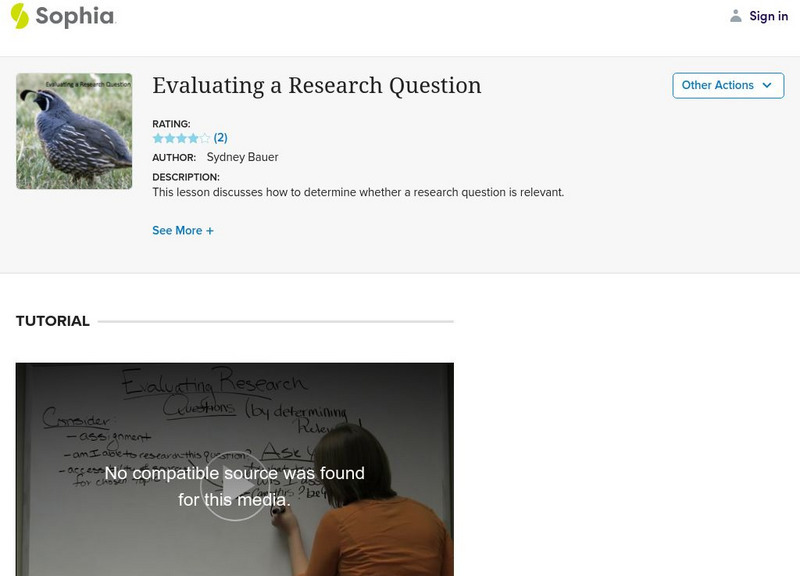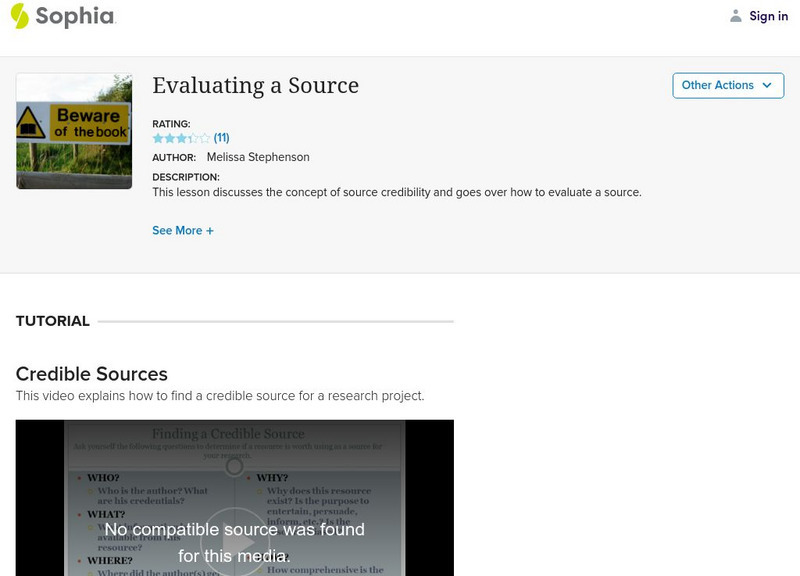Hi, what do you want to do?
PBS
Pbs Learning Media: Studying the Antarctic Sea Floor
Studying life on the seafloor beneath Antarctica's thick ice is a major challenge for ecologists. Learn about a new device that can reach those icy depths in this video segment adapted from WomenInAntarctica.com. [4:39]
PBS
Pbs Learning Media: Bubonic Plague
In this video segment adapted from A Science Odyssey, learn about bubonic plague and how city officials in San Francisco tried to contain its spread in the early 1900s. [5:06]
PBS
Pbs Learning Media: A Nanotube Space Elevator
In this video adapted from NOVA scienceNOW, find out about the discovery of a new building material, the carbon nanotube, whose physical properties could theoretically enable the creation of a 22,000-mile elevator to space. [4:29]
Sophia Learning
Sophia: Informational Writing
This video lesson focuses on informational writing including the definition, what to include, and what to leave out. W.9-10.2 Informative CCSS.ELA-Literacy.CCRA.W.2, W.11-12.2 Informative
PBS
Pbs Learning Media: Alaska Native Teens Help Researchers
In this video adapted from KUAC-TV and the Geophysical Institute at the University of Alaska, Fairbanks, Alaska Native students contribute to research on how their environment is changing as a result of global warming.
PBS
Pbs Learning Media: Talking Bacteria
In this video segment adapted from NOVA scienceNOW, microbiologist Bonnie Bassler shares her discovery that bacteria coordinate group activity by communicating through chemical signals. [4:49]
PBS
Pbs Learning Media: Young Explorers: Read Good Books!: Famous Artists
Friends visit their local library to read and discover more about art and artists. In this segment, kids create examples of and give definitions of different types of two-dimensional art. Kids demonstrate and define: landscapes,...
PBS
Pbs Learning Media: Young Explorers: Read Good Books!: Letters to Farmers
In this video, friends visit their local library to read and discover more about farming. In this segment, kids write letters to local farmers thanking them for the hard work they do. [2:12]
PBS
Pbs Learning Media: Stem Cells Breakthrough
In this video segment adapted from NOVA scienceNOW, follow the scientific process that led to a revolutionary method for creating stem cells without the use of human embryos. [5:16]
Science Friday Initiative
Science Friday: Video Pick: Gotta Dance
Writing in the journal Biology Letters, scientists examine how women perceive different male dance movements. We'll find out more. [4:27]
Science Friday Initiative
Science Friday: Stem Cells in Review
Researchers announced a significant advance in stem cell science, changing skin cells into cells that seem to behave like embryonic stem cells. Science Friday talks about the research and where the field goes from here. [30:18]
Sophia Learning
Sophia: Writing Observation Questions: Lesson 8
In this lesson, students see how to go about writing a question which can be answered through observation. It is 8 of 8 in the series titled "Writing Observation Questions."
Sophia Learning
Sophia: Primary vs. Secondary Sources: Lesson 2
This lesson introduces primary and secondary sources. It is 2 of 2 in the series titled "Primary vs. Secondary Sources."
Massachusetts Institute of Technology
Mit: #Ask Mit: What Does the Future of Nuclear Science Look Like?
Senior reactor operator at the MIT Research Nuclear Reactor, Sarah Don discusses what the future of nuclear science looks like. [2:00]
NOAA
Noaa: Estuary Education: Marsh Migration
Dr. Alex Kolker shows high school students how a salt marsh can actually migrate across the landscape. He uses fresh core samples taken by students to demonstrate his points. [4:04]
Sophia Learning
Sophia: Evaluating a Research Question
A video lesson discussing how to evaluate a research question to see if it is relevant. [11:59] CCSS.ELA-Literacy.CCRA.W.8
Sophia Learning
Sophia: Evaluating a Source
This lesson discusses the concept of source credibility and goes over how to evaluate a source. This tutorial lesson shares a short screencast with the lesson's content. [7:06]
Microsoft
Microsoft: "How to Give a Good Research Talk" by Simon Peyton Jones
This is the YouTube video [58:41] "How to Give a Good Research Talk" by Simon Peyton Jones. He presents ideas of how to develop an effective presentation about research.
Understood For All
Understood.org: Video: How First Graders Learn to Research and Organize Ideas
In this video from GreatSchools, viewers will observe strategies that first graders use as they research topics and organize new information. Observers will note the conversations about what they learn and examples of note taking. [1:45]
PBS
Pbs Learning Media: Steve Mac Lean: Conservationist
In this video profile produced for Teachers' Domain, meet conservationist Steve MacLean, an Inupiaq from Barrow, Alaska, who works to preserve the health of the Bering Sea ecosystem. Site includes short essay, discussion questions,...
PBS
Pbs Learning Media: What Is Astrobiology?
In this video from the Science and Technology Chat series, learn about astrobiology, an interdisciplinary field that uses biology, astronomy, and geology to study the origins of life on Earth and to search for possible life on other...
Khan Academy
Khan Academy: Thinking Like a Historian
Khan Academy's historian Kim Kutz Elliott discusses some of the basic skills for thinking like a historian. [8:47]
PBS
Pbs: Wyoming's Native Americans: Who Are the Eastern Shoshone?
Learn how and when the Eastern Shoshone came to Wyoming and their values. In the accompanying lessons plans (found in the Support Materials), students will gain an understanding of the Fort Bridger Treaty of 1868 including its importance...
PBS
Pbs Learning Media: Molly of Denali: First Fish
In this episode [25:25], students explore Alaska Native culture and values using "First Fish," an 11-minute animated story from the PBS KIDS series Molly of Denali. Before Molly catches her first fish, a childhood milestone that is as...







